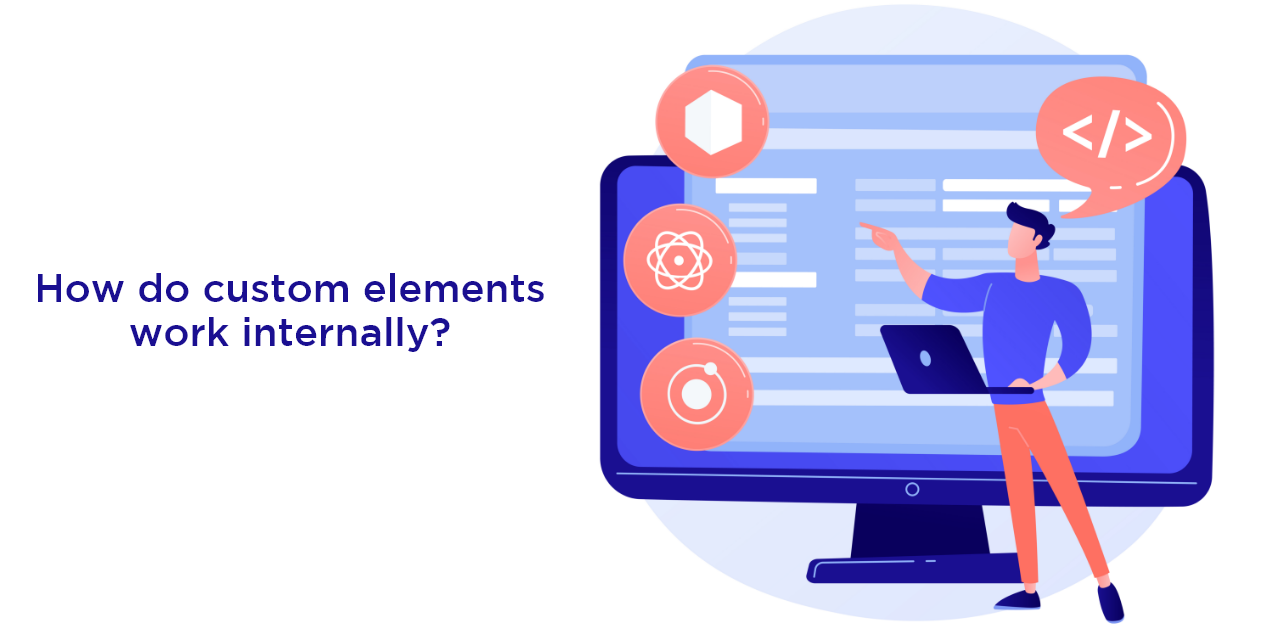Top 10 Interview Questions for Angular Developers
Posted on December 12, 2022 at 02:15 PM

Angular is a robust front-end JavaScript framework frequently used in creating apps.
Due to its rising popularity, Angular developers are in high demand.
More and more companies have started hiring Angular developers. According to recent data, between 2016 and 2026, employment for Angular developers is expected to grow by about 31%. Angular is referred to as the Swiss army knife of front-end developers and has over 7.2 million repositories on GitHub!
Angular developers in India earn between 2.1 and 5.6 lac INR per year.
If you are also preparing for an angular interview, consider these top 10 interview questions for your preparation!
What are the top 10 interview questions for Angular Developers?
The jitters before any extensive interview are inevitable. Anyone preparing for an Angular interview can feel them, even when they know the technology inside out.
Here, we have listed the top 10 interview questions for Angular developers. Kindly review them and ensure you know how to answer these questions!
1. How do custom elements work internally?

Answer:
Let us break down the internal operations of custom elements step by step:Registration of the custom elements
Angular uses the create CustomElement() function to register the custom elements. This function changes a component into a class that can be registered as a custom element with the browser.Addition of the custom element to the DOM
The custom element gets added to the DOM, similar to a built-in HTML element.Browser instantiates a component-based class.
The browser creates and adds an instance of the registered class to the DOM after adding the custom element to the document object model (DOM).Data binding and change detection
The created instance activates data binding and change detection in the final step. The component and DOM data are used to render the template’s content.2. What is the most significant advantage of AOT in Angular?
 Answer:
The benefits of utilizing the AOT compiler in Angular are as follows:
Answer:
The benefits of utilizing the AOT compiler in Angular are as follows:
It renders more quickly.
The browser receives a pre-compiled copy of the application to download when we use the AOT compiler. In this case, the browser loads executable code. It renders the application immediately without waiting for it to be compiled.Download sizes are smaller for the Angular framework.
AOT prevents downloading the Angular compiler if the application has already been compiled. The application payload is significantly reduced by leaving out the compiler because it makes up about half of Angular.Fewer asynchronous requests
The JavaScript application uses the compiler to inline external HTML templates and CSS style sheets. The need for separate AJAX requests for those source files is thus removed.Early detection of template errors
Developers can quickly find and report template binding errors with the AOT compiler before users are even aware of them during the build phase.Improved security
AOT offers better security because it converts HTML components and templates into JavaScript files before serving them to the client. Injection attacks are improbable because there are no templates to read. Also, there is no risky client-side HTML or JavaScript evaluation.3. What are Observables and Promises in Angular?
Answer: While Observables and Promises in Angular deal with asynchronous events, promises deal with one at a time, and observables deal with several occasions over time. Promises: They only ever emit one value at once. They do not allow for cancellation and start working right away after creation. The child’s promises contain “push errors.” Observables are executed only when subscribed to the subscribe() method. Over time, they release a range of values. They support various operations, including forEach, filter, and retry. The subscribers receive errors from them. The listener stops receiving new deals when the unsubscribe() method is called.4. How do you differentiate between pure and impure pipes?
Answer:
| Pure Pipe | Impure Pipe |
| When Angular notices a change in the value or parameters passed to a pipe, a “pure pipe” is invoked. | Every change detection cycle, regardless of any changes to the value or parameter passed, invokes an impure pipe. |
| @Pipe({ name: ‘filterPipe,’ pure: true }) export class FilterPipe {} | @Pipe({ name: ‘filterPipe,’ pure: false }) export class FilterPipe {} |
| Pure pipes can be used for multiple purposes without affecting the output result. | Because they might impact the internal state from the outside, impure pipes cannot be shared. |
| Input values or parameters can influence the output value or its change. | The input values cannot predict the output value or its change. |
5. What does REST in Angular mean to you?
Answer: REST stands for “REpresentational State Transfer.“ REST is an API (Application Programming Interface) style that operates on HTTP requests. The requested URL, in this instance, identifies the specific data that must be processed. Next, an HTTP method specifies the precise operation that must be carried out on the requested data. RESTful APIs are those that adopt this methodology.6. What are some advantages of Angular over other frameworks?
 Answer:
The following characteristics make Angular superior to other frameworks:
Answer:
The following characteristics make Angular superior to other frameworks:
Amazing Built-In Features
Routing, state management, the RxJS library, dependency injection, HTTP services, and other features come standard with Angular. Because of this, Angular developers are not required to search separately for each of the parts above.Declarative UI
The UI in Angular is declarative. An application’s user interface (UI) is rendered using HTML because it is a declarative language. Compared to JavaScript, it is much simpler to use.Long-term Google Support
Google is in charge of Angular’s development and upkeep. Google intends to continue using and supporting Angular in the long run.7. How can you transfer components to custom elements?
Answer: Transferring components to custom elements requires the execution of two key steps:Creating a custom element class
Create a custom element class using Angular’s create Custom Element() function as a first step. The function turns an Angular component (along with any dependencies it may have) into a custom element. Through this conversion, the NgElementConstructor interface is implemented, resulting in a constructor class that can be used to create a self-bootstrapping instance.Registering element classes with the browser
The configured constructor and the corresponding custom-element tag are registered with the browser’s CustomElementRegistry using the custom Elements.define() function.8. Can you explain jQLite?
Answer:
JQuery Lite, also called jQLite, is a subset of jQuery and includes all of its features. By default, it is packaged with Angular.
It enables Angular to manipulate the DOM in a cross-browser-compatible way. jQLite only implements the most frequently required functionality, resulting in a small footprint.
9. What is an angular router?

Answer:
The Angular Router is a mechanism that makes it easier for users to move between views as they use the application. It adheres to the concept model for application navigation used by browsers.
10. What are controllers in Angular?
Answer:
AngularJS controllers manage the data in AngularJS applications. The ng-controller directive defines a controller for an application.
Conclusion
We hope you understand these top 10 interview questions for Angular developers. The best way to tackle any questions asked during an interview is by immersing yourself in the subject and clarifying your concepts.
Caution: It is not advisable to only depend on these ten interview questions and ignore other concepts.
You can also opt for an Angular developer internship at Relinns Technologies!
Relinns Technologies is a top-tier software development company that delivers only the best solutions, products, and services to its clients.
We provide a conducive environment for our interns’ and employees’ overall growth while keeping the fun factor intact.
Our website is Relinns Technologies. Visit the link to learn more about our internships!
Related Posts
We could talk tech all day. But we’d like to do things too,
like everything we’ve been promising out here.

